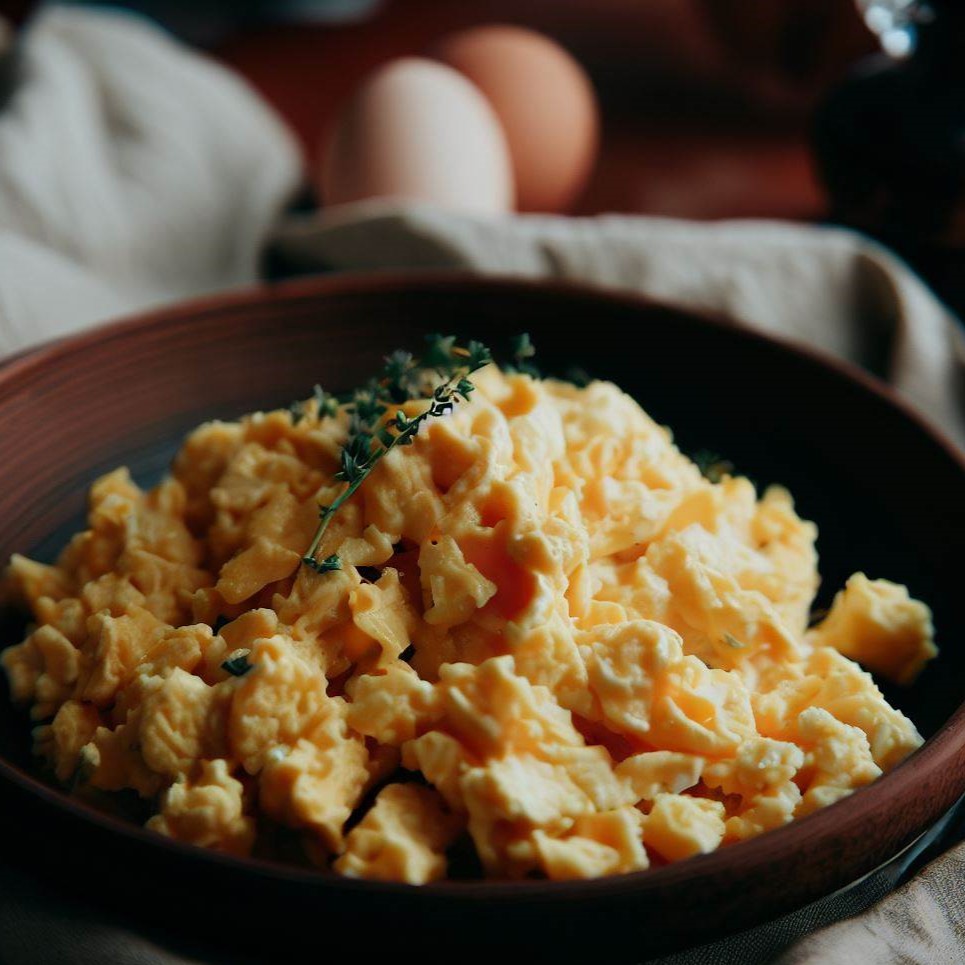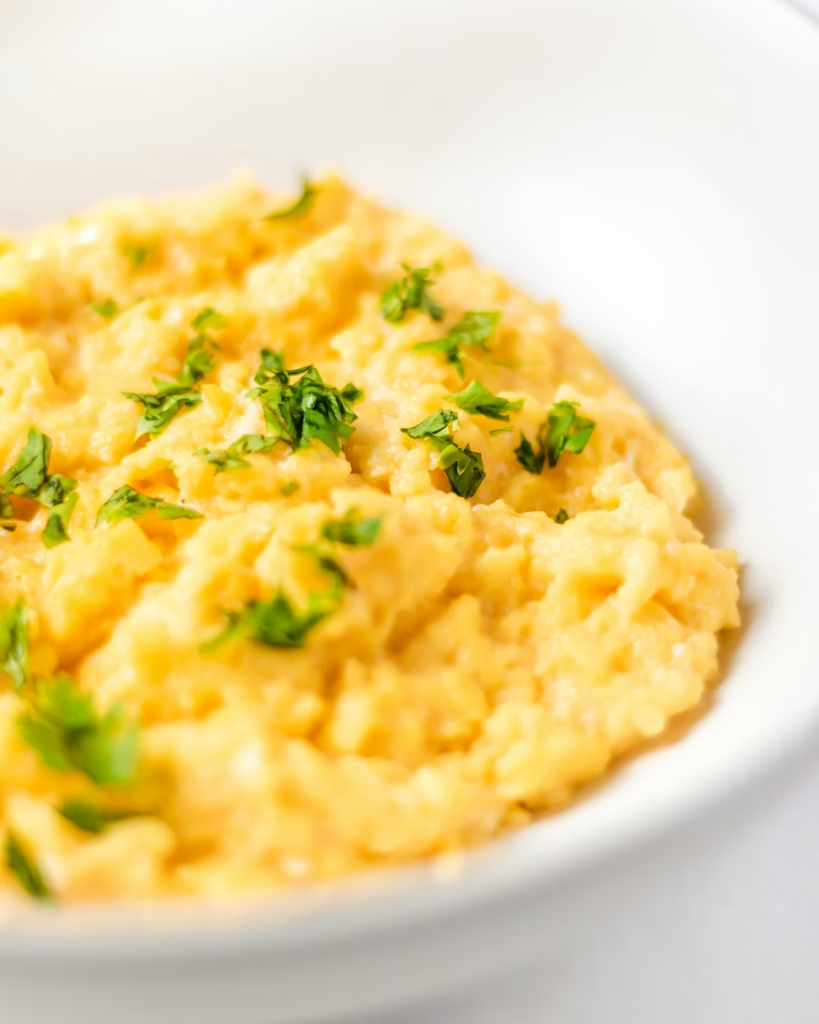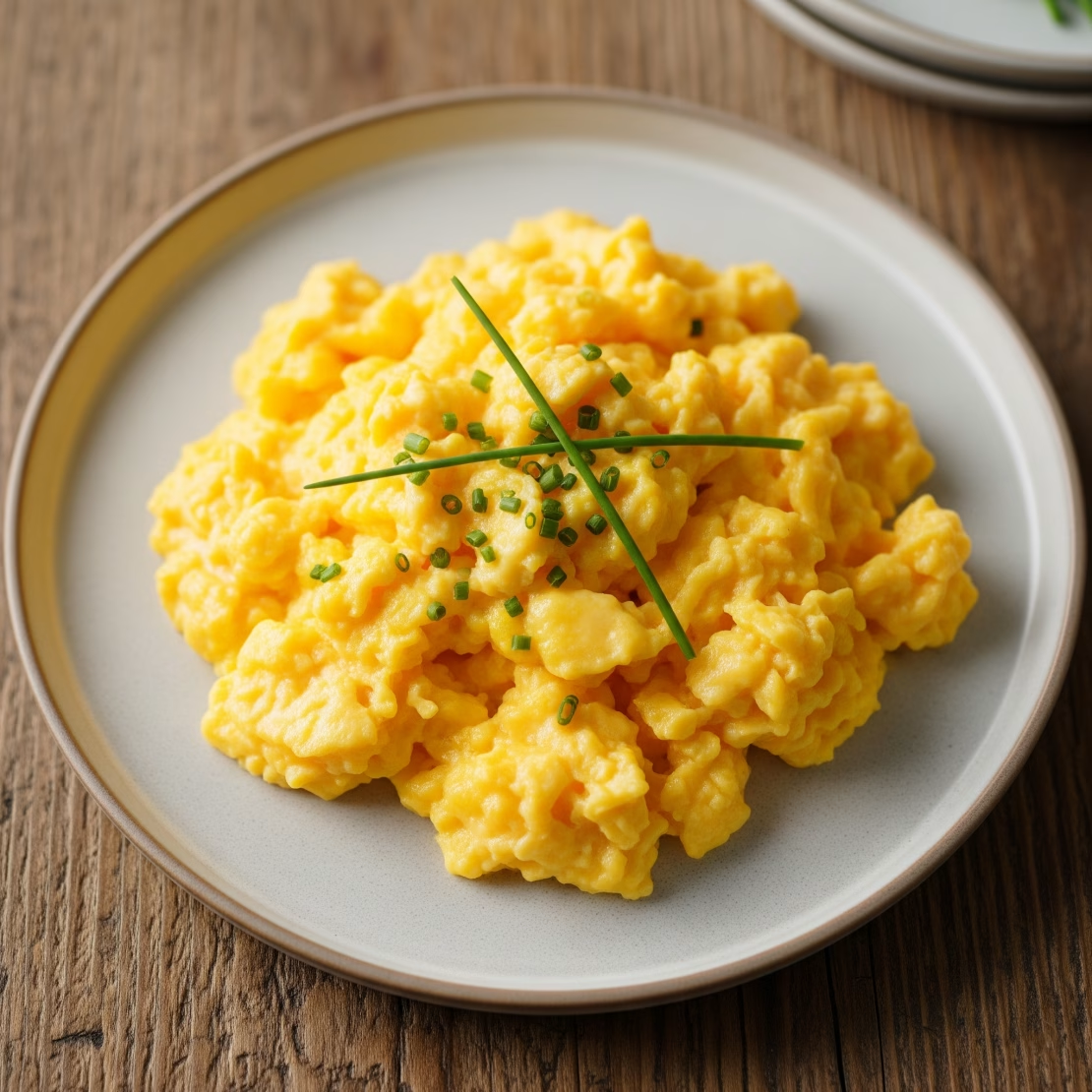Whether you’re a culinary enthusiast or a busy professional, a plate of perfectly scrambled eggs is a breakfast delight that transcends generations.
In this detailed recipe article, we will explore the art of crafting the most delicious and fluffy scrambled eggs that will kickstart your day with a burst of flavor and energy.
This article takes you on a journey through time, exploring the origins and evolution of this simple yet satisfying dish.
Table of Contents
Preparation Time: 5 minutes
Cooking Time: 5 minutes
Serves: 2 people
Ingredients
- 4 large eggs
- Salt, to taste
- Black pepper, to taste
- 2 tablespoons of butter
- Optional: 1/4 cup of milk or cream
- Optional: 2 tablespoons of shredded cheese
Scrambled eggs are a staple breakfast dish known for their simplicity and versatility.
Whether you’re a seasoned home cook or a culinary beginner, this easy-to-follow scrambled eggs recipe is sure to be a hit.
So let’s dive into the process of creating fluffy and delicious scrambled eggs!
Step-by-Step Preparation
Step 1: Begin by gathering all the ingredients. When cooking, it’s always easier to have everything you need at hand. Ensure you have your eggs, salt, pepper, butter, and optional ingredients ready to go.
Step 2: Carefully crack the eggs into a bowl, ensuring no shell fragments make their way in. To do this, gently tap each egg against a flat surface until a crack forms, then pull the two halves apart over the bowl.
Step 3: Now, it’s time to season your eggs. Add a pinch of salt and black pepper to the bowl. If you’re using milk or cream, add it now. This step is where you can let your creativity shine, so feel free to add a dash of your favorite spices or herbs.
Step 4: Use a whisk to combine the eggs and seasonings. The more you whisk, the fluffier your scrambled eggs will turn out.
Step 5: Heat a non-stick frying pan over medium heat. Once the pan is warm, add the butter and let it melt, ensuring it coats the bottom of the pan evenly.
Step 6: Next, pour the whisked egg mixture into the pan. Allow the eggs to cook undisturbed for a few moments until they start to set around the edges.
Step 7: Using a spatula, gently stir the eggs, pushing them from the edges towards the center. Keep doing this until the eggs are mostly cooked but still slightly runny.
Step 8: If you choose to use cheese, now is the time to sprinkle it over your nearly cooked eggs. Let them cook for another minute or so, until the eggs are fully set and the cheese is melted.
Step 9: Serve your delicious scrambled eggs immediately, while they’re still hot. They pair perfectly with toast, fresh fruit, or a refreshing glass of orange juice.

Nutritional Facts
A serving of scrambled eggs typically contains:
- Calories: 215
- Protein: 14g
- Fat: 16g
- Carbohydrates: 2g
The nutritional values may vary depending on the size of the eggs and any additional ingredients used.
So, there you have it! A simple, step-by-step guide to making delectable scrambled eggs.
Whether you’re an experienced chef or a newbie in the kitchen, this easy recipe will help you serve up a breakfast classic that everyone will enjoy.
Happy cooking!
Tips for Perfection
1. Fresh Ingredients
Opt for fresh eggs for the best flavor and texture.
2. Whisking Technique
Whisk the eggs thoroughly to incorporate air, resulting in fluffier scrambled eggs.
3. Low and Slow
Cook the eggs over medium-low heat for a creamy and tender outcome.
4. Experiment with Additions
Get creative by experimenting with various herbs, cheeses, or even diced vegetables for a personalized touch.
History of Scrambled Eggs
Scrambled eggs, a classic breakfast staple loved worldwide, have a rich history rooted in culinary traditions.
Early Beginnings
The exact origin of scrambled eggs is challenging to pinpoint, given their straightforward preparation. However, evidence suggests that eggs have been a dietary staple for centuries across various cultures. Ancient Romans and Greeks enjoyed variations of scrambled eggs, often incorporating herbs and spices for added flavor.
Medieval Europe
As culinary techniques evolved, scrambled eggs found their way into medieval European kitchens. Cookbooks from the 14th and 15th centuries documented recipes for “buttered eggs” and “eggs in a dish,” resembling the scrambled eggs we know today. These dishes often included butter, herbs, and sometimes cheese.
Renaissance and Beyond
With the Renaissance came an increased focus on culinary arts. Scrambled eggs continued to evolve, appearing in more refined forms in European kitchens. The addition of cream or milk became popular, contributing to the creamy texture that many people enjoy in their scrambled eggs today.
Colonial America
Scrambled eggs made their way to colonial America, becoming a hearty and accessible breakfast option. Early American cookbooks featured recipes for scrambled eggs, showcasing the dish’s adaptability to various regional ingredients.
20th Century Innovations
The 20th century brought about significant innovations in the culinary world, influencing the way scrambled eggs were prepared and enjoyed. Convenience became a key factor, and techniques like microwave cooking gained popularity, making scrambled eggs even more accessible for busy households.
Modern Variations
In the 21st century, scrambled eggs have become a canvas for creativity in the kitchen. Chefs and home cooks alike experiment with diverse ingredients, from fresh herbs and vegetables to international spices, showcasing the dish’s adaptability to different tastes and preferences.

From ancient civilizations to contemporary kitchens, scrambled eggs have stood the test of time as a versatile and beloved dish. Whether enjoyed in a simple form with salt and pepper or elevated with gourmet ingredients, the history of scrambled eggs reflects the evolution of culinary traditions across cultures and centuries.
Mastering the art of crafting perfect scrambled eggs is a delightful experience that can elevate your breakfast game. By following this detailed recipe and incorporating our tips, you’ll be able to enjoy a plate of velvety, flavorful eggs every morning. So, why settle for ordinary when you can savor extraordinary scrambled eggs?
Frequently Asked Questions about Scrambled Eggs Recipe
Q1: Can I make scrambled eggs without butter? A1: Yes, you can use olive oil or a non-stick cooking spray as a butter alternative.
Q2: How do I ensure my scrambled eggs are not overcooked? A2: Remove the eggs from heat just before they reach your desired texture, as they will continue to cook slightly.
Q3: Can I add vegetables to my scrambled eggs? A3: Absolutely! Chopped vegetables like bell peppers, onions, or tomatoes can add color and flavor.
Q4: Is it necessary to add milk or cream to the eggs? A4: No, it’s optional. Adding dairy can enhance creaminess, but delicious scrambled eggs can be made without it.
Q5: Can I prepare scrambled eggs in advance? A5: It’s best to enjoy scrambled eggs fresh, but you can refrigerate leftovers and reheat them gently on low heat.


